At the dawn of computer memory
The article has heavy photos, so I removed it under the spoilers.
The problem of storing digital information arose before the actual computers appeared. Before we talk about specific physical implementations, we introduce the terminology.
Memory is a physical device or storage medium. In the simplest case, memory is an array of numbered cells containing “1” or “0”. We will not consider zeros and ones written in a notebook as memory, since it is impossible (or strictly speaking possible but meaningless) to automatically read such a memory.
From the point of view of organizing access to data, memory can be divided into the following several types:
For the first time, the task of storing and reading data from memory was posed, and then it was successfully solved for thread control in a loom.
Falcon loom. In the foreground are punch cards that define the fabric pattern. Link
How does this work? Consider first the simplest machine diagram:

Wikipedia loom
The idea is simple, the heatsinks ( c in the figure) form a gap (yawn in weaving terminology) between the warp threads, which is fed from the shaft a (navoi), the shuttle i is skipped, the thread is pressed from it using the reed h , then the heatset pedals e change places and the process is repeated. Canvas wound on a commodity shaft u . And everything would be fine, but what if you want to get a pattern? The obvious option is to individually raise and lower the warp threads in each iteration, provided that they are of different colors (for example, black and white). Such a design was proposed in 1725 by Basil Bouchon, and then Jean-Baptiste Falcon in 1728 developed a system for automatically feeding punch cards. Let us analyze the operation of this mechanism using the example of a later, but similar in design, Jacquard machine:
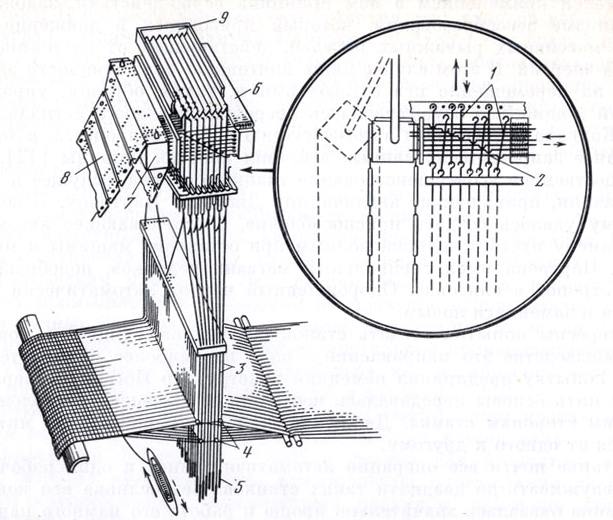
Jacquard machine diagram from a good article about jacquard curtains
Self-portrait of Joseph Marie Jacquard, made on his loom. Wikipedia
Thus, we got the first ROM, which will become an integral part of the first computers and will survive until the beginning of the 80s.
So, the 20th century has come, the first computers appeared, and in place with them the need for RAM. One of the first to encounter this problem was John Vincent Atanasov and Clifford Berry, when in 1939 they began to assemble their ABC, Atanasoff-Berry Computer. It was one of the first digital electronic computing devices.

General view of ABC dragged from NYT
Original drum with ABC, taken from here .
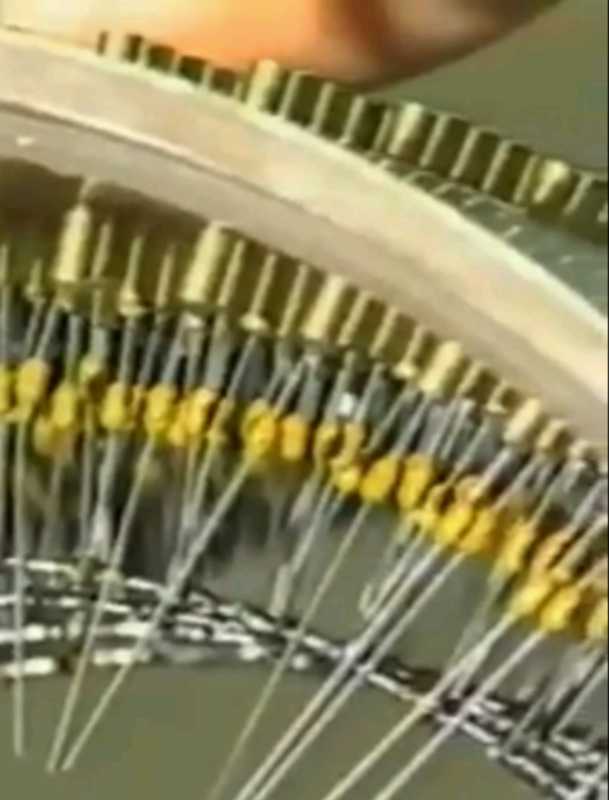
A fragment of a replica of an ABC drum from there . The contacts and the capacitors themselves are visible.
There is an article on Wikipedia about the future fate of such a memory and its heyday.
In the 40s, at the time of the appearance of the first computers, a set of knurled solutions and technologies did not yet exist, as it is today, which led to the appearance of very unusual designs. One of them is a Williams pipe. It was a kinescope, on the phosphor of which, depending on what value you want to remember, “1” or “0”, a dash or dot was lit. When it was necessary to read the value, the electron beam was directed to the same place and by electron emission, using the electrode installed near the picture tube, it was found out what was recorded.
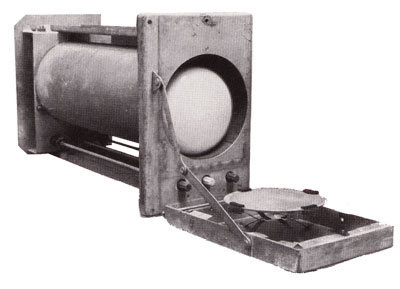
Williams tube prototype from Wikipedia
Recorded data on a Williams tube tube picture screen from Wikipedia
As a rule, the memory cells in the Williams tubes were single-bit, and in order to operate with multi-bit words, they worked in parallel by the number of bits.
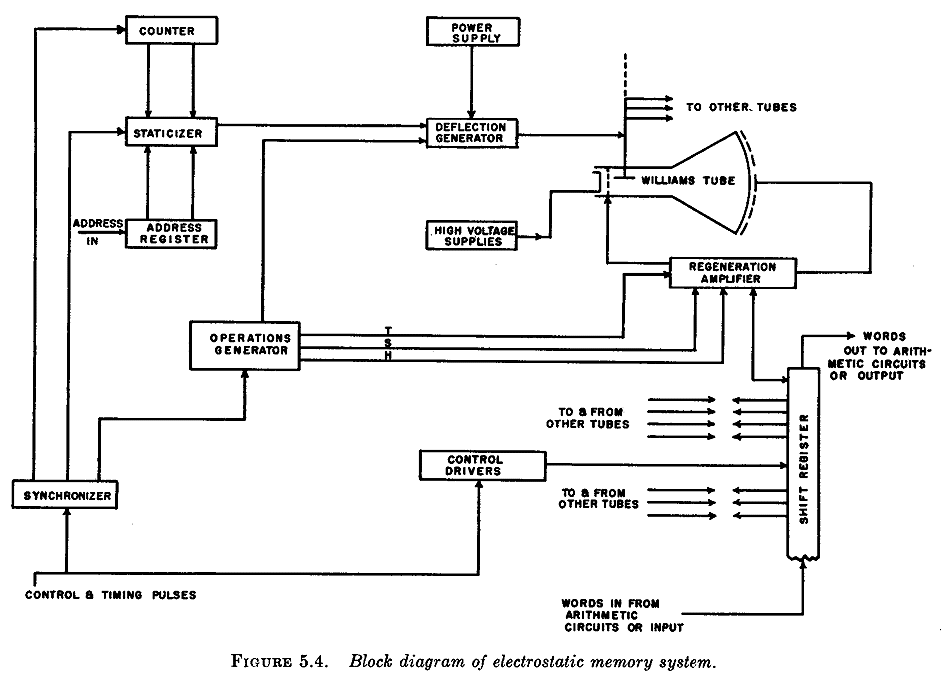
Williams tube block diagram from here
Selectron from here
In this huge radio tube, information was stored in slots covered with a phosphor, which, depending on the charge, passed or did not pass electrons from the "reading" gun, which in turn fell or did not fall into the phosphorus layer, from which the sought reading chains were knocked out electrons. At that time, it was one of the densest and fastest memory, but its age was short.
As you can already guess from the previous chapter, in the 40s they tried to force “remember” anything. Waves in the medium were no exception. Since a little earlier computers were radically developed (I really want to write a separate article about them), their elemental base immediately attracted the attention of pioneers of the digital era. One of these devices was the delay line.
In radar stations, they were used to filter the signal from stationary objects. From the response to the Nth pulse of the radar, the delayed response to the Nth 1st pulse was subtracted, and thus only responses from moving objects turned out to be non-zero, which made it possible to get rid of the noise that created the reflected relief of the radio wave. But wait a moment! But what if we run the signal in the delay line and lock the input to the output? It will be a memory! About the same thought occurred to John Eckert Jr. A flask with mercury was used as a delay line, at the ends of which piezocrystals were installed, one to excite oscillations, and the second to read them.

Simplified circuit of a memory cell on a mercury delay line. Taken from here
Obviously, in this way it is possible to store not one bit, but a whole packet, which was successfully used. However, this memory soon lost its relevance.
Just like a magnet remembers
And now the time has come for magnetic memory. And here people who are not familiar with the history of ancient computers will immediately remember about hard drives. Well, let's start with them. And first remember the memory on a magnetic drum.
The magnetic drum, which I very much loved in my childhood to examine when I visited the Polytechnic Museum. Photo is clear where
Recording to such devices was very simple. A magnetic field was applied to a certain place, the strength of which encoded one or zero. The reading of information took place using the so-called magnetic head, in which, when it passed at a certain speed past the area with the recorded data, an induced current appeared due to a change in the magnetic field, the strength of which depended on the strength of the magnetic field. Tape drives worked in a similar way. Interestingly, modern hard drives use a different principle of storing and reading information. Which is an occasion for a separate article.
In the previous chapters, about warm tube memory, I mentioned that she did not live long. But who replaced her? And the answer is again magnetic memory, this time in the form of memory on ferrite rings. Ferrites have a very useful property, magnetization hysteresis , i.e. they could be in two fixed states, which is what we need.
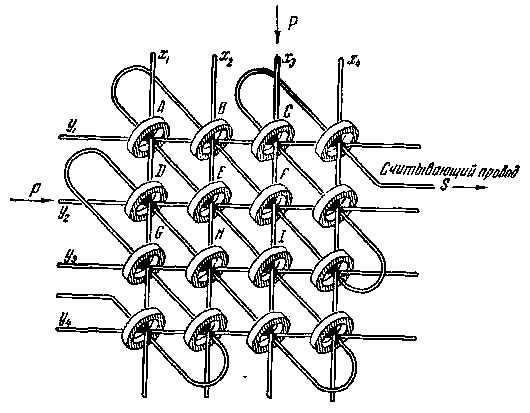
The block diagram of addressable memory on ferrite rings is from here
To write ring F to conductors and a current is supplied that forms an H / 2 field around each of the conductors, provided that only H is sufficient to change the magnetization of the ferromagnetic ring, and the magnetization of the rings C , D, and E caught in the path after turning off the current returns to its original values due to the hysteresis magnetization. Now we need to read the data. To do this, the write current “0” is applied to the target ring. If a unit was recorded, then the magnetic field in this ring will change its direction, a current pulse will be induced in conductor S , and if there was “0” then there will be no current. So we found out what was recorded. Of course, as in the Williams tube, you have to return the unit to its place. For years to come, this type of memory will reign supreme in computers. According to one version, it is to him that we owe the term “flash memory”, because of the production method, manual stitching of rings with wires, something like this:
The RAM board, for 11560 bits, divided into 20 matrices of 34x17 format. It was used in an alphanumeric terminal with vector character mapping RIN-609; manufacturer - presumably, one of the enterprises of Armenia. From there.
There is much in the world, Horatio's friend ... oh wrong. There are many more strange ways to store data. I hope in the comments they will throw something else interesting. For my part, I’ll say that I highly recommend that people involved in the development of digital and simple technology look at early ideas in various branches of technical thought, when, as they say, the need for invention is tricky, it teaches thinking outside the box and just broadens one’s horizons. Thanks for your attention.
Introduction
The problem of storing digital information arose before the actual computers appeared. Before we talk about specific physical implementations, we introduce the terminology.
Memory is a physical device or storage medium. In the simplest case, memory is an array of numbered cells containing “1” or “0”. We will not consider zeros and ones written in a notebook as memory, since it is impossible (or strictly speaking possible but meaningless) to automatically read such a memory.
From the point of view of organizing access to data, memory can be divided into the following several types:
- RAM - Random Access Memory, random access memory. You can read or change any cell.
- ROM - Read-Only Memory, a memory from which you can read any cell but cannot be written (Read Only Memory, ROM).
- FIFO - First In, First Out, a memory that can be written only from above, and read only from below (in Russian words it’s the turn).
- Stack (LIFO) - Last In, First Out, Access memory, access to which is possible to read and write only to the top element (I really like its Soviet name, store).
- CAM - Content-addressable memory, memory addressable by content (Russian name - associative memory).
Fabric Patterns
For the first time, the task of storing and reading data from memory was posed, and then it was successfully solved for thread control in a loom.
Falcon loom 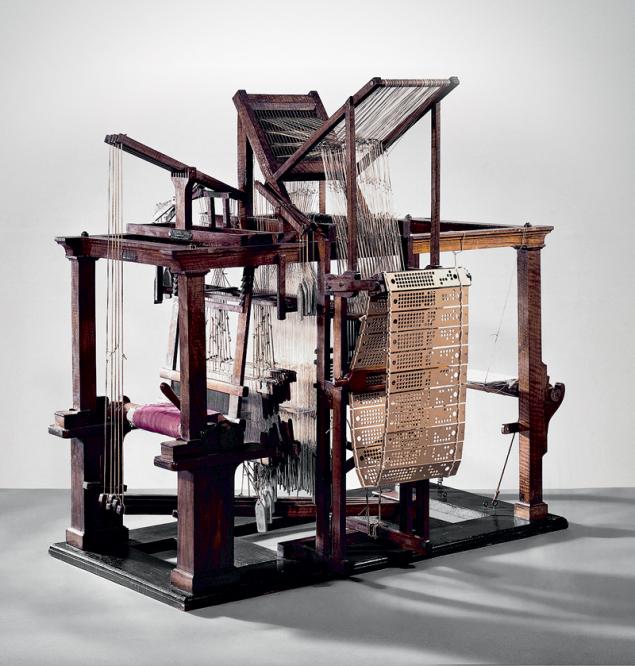

Falcon loom. In the foreground are punch cards that define the fabric pattern. Link
How does this work? Consider first the simplest machine diagram:

Wikipedia loom
The idea is simple, the heatsinks ( c in the figure) form a gap (yawn in weaving terminology) between the warp threads, which is fed from the shaft a (navoi), the shuttle i is skipped, the thread is pressed from it using the reed h , then the heatset pedals e change places and the process is repeated. Canvas wound on a commodity shaft u . And everything would be fine, but what if you want to get a pattern? The obvious option is to individually raise and lower the warp threads in each iteration, provided that they are of different colors (for example, black and white). Such a design was proposed in 1725 by Basil Bouchon, and then Jean-Baptiste Falcon in 1728 developed a system for automatically feeding punch cards. Let us analyze the operation of this mechanism using the example of a later, but similar in design, Jacquard machine:

Jacquard machine diagram from a good article about jacquard curtains
Self portrait of Joseph Marie Jacquard 

Self-portrait of Joseph Marie Jacquard, made on his loom. Wikipedia
Thus, we got the first ROM, which will become an integral part of the first computers and will survive until the beginning of the 80s.
First bytes
So, the 20th century has come, the first computers appeared, and in place with them the need for RAM. One of the first to encounter this problem was John Vincent Atanasov and Clifford Berry, when in 1939 they began to assemble their ABC, Atanasoff-Berry Computer. It was one of the first digital electronic computing devices.

General view of ABC dragged from NYT
Original drum with ABC 

Original drum with ABC, taken from here .

A fragment of a replica of an ABC drum from there . The contacts and the capacitors themselves are visible.
There is an article on Wikipedia about the future fate of such a memory and its heyday.
North picture tubes remember
In the 40s, at the time of the appearance of the first computers, a set of knurled solutions and technologies did not yet exist, as it is today, which led to the appearance of very unusual designs. One of them is a Williams pipe. It was a kinescope, on the phosphor of which, depending on what value you want to remember, “1” or “0”, a dash or dot was lit. When it was necessary to read the value, the electron beam was directed to the same place and by electron emission, using the electrode installed near the picture tube, it was found out what was recorded.

Williams tube prototype from Wikipedia
Recorded data on a Williams tube picture tube screen 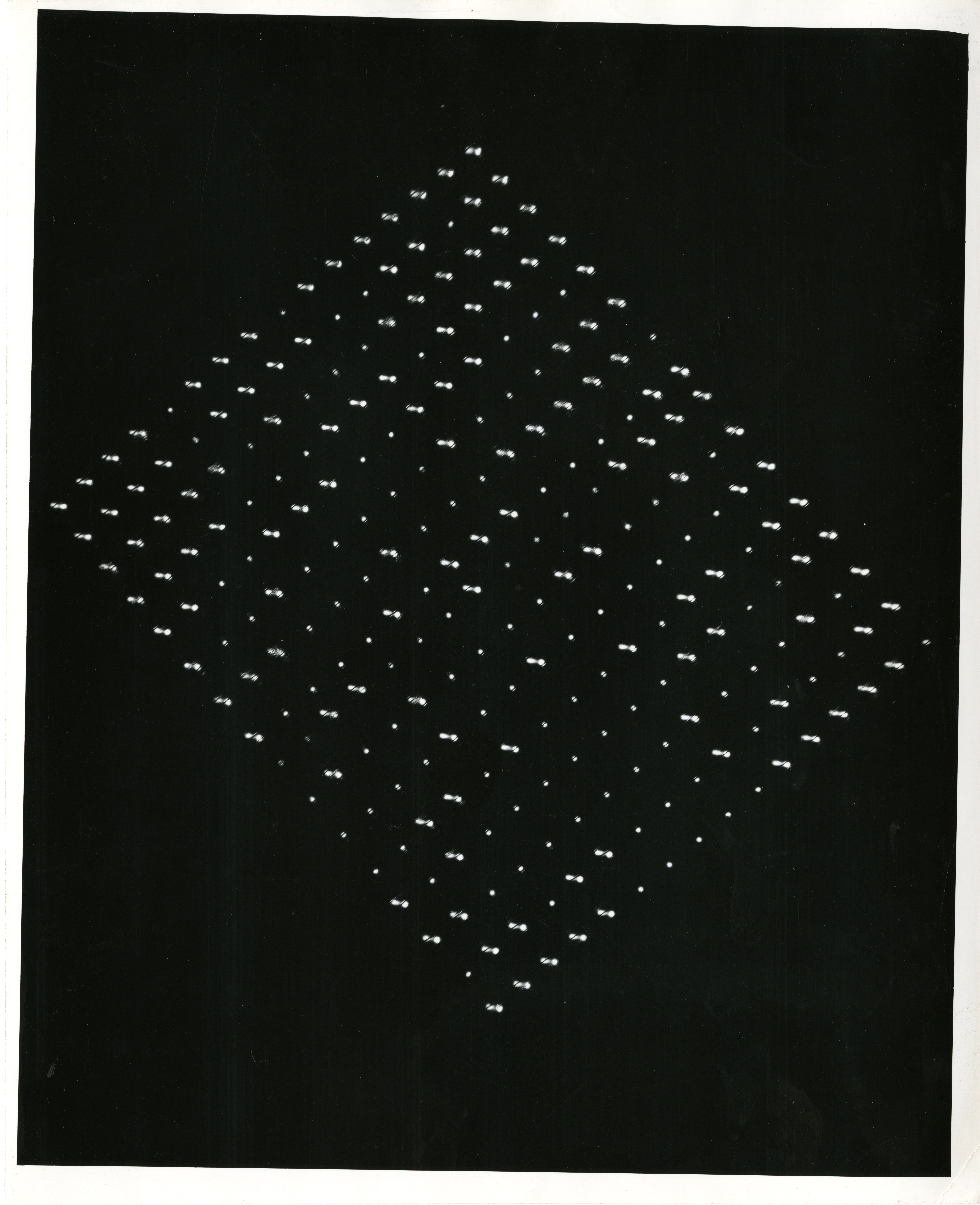

Recorded data on a Williams tube tube picture screen from Wikipedia
As a rule, the memory cells in the Williams tubes were single-bit, and in order to operate with multi-bit words, they worked in parallel by the number of bits.

Williams tube block diagram from here
Selectron 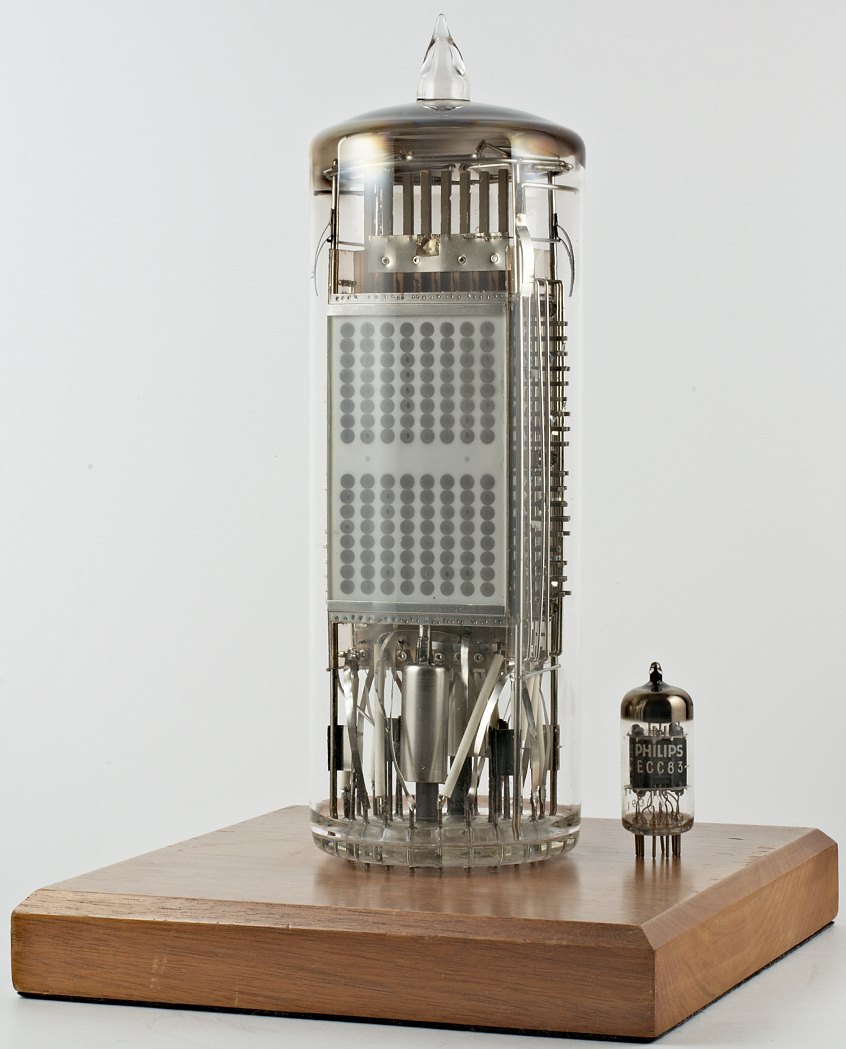

Selectron from here
In this huge radio tube, information was stored in slots covered with a phosphor, which, depending on the charge, passed or did not pass electrons from the "reading" gun, which in turn fell or did not fall into the phosphorus layer, from which the sought reading chains were knocked out electrons. At that time, it was one of the densest and fastest memory, but its age was short.
Mercury can not only measure temperature
As you can already guess from the previous chapter, in the 40s they tried to force “remember” anything. Waves in the medium were no exception. Since a little earlier computers were radically developed (I really want to write a separate article about them), their elemental base immediately attracted the attention of pioneers of the digital era. One of these devices was the delay line.
In radar stations, they were used to filter the signal from stationary objects. From the response to the Nth pulse of the radar, the delayed response to the Nth 1st pulse was subtracted, and thus only responses from moving objects turned out to be non-zero, which made it possible to get rid of the noise that created the reflected relief of the radio wave. But wait a moment! But what if we run the signal in the delay line and lock the input to the output? It will be a memory! About the same thought occurred to John Eckert Jr. A flask with mercury was used as a delay line, at the ends of which piezocrystals were installed, one to excite oscillations, and the second to read them.

Simplified circuit of a memory cell on a mercury delay line. Taken from here
Obviously, in this way it is possible to store not one bit, but a whole packet, which was successfully used. However, this memory soon lost its relevance.
Just like a magnet remembers
And now the time has come for magnetic memory. And here people who are not familiar with the history of ancient computers will immediately remember about hard drives. Well, let's start with them. And first remember the memory on a magnetic drum.
Magnetic drum 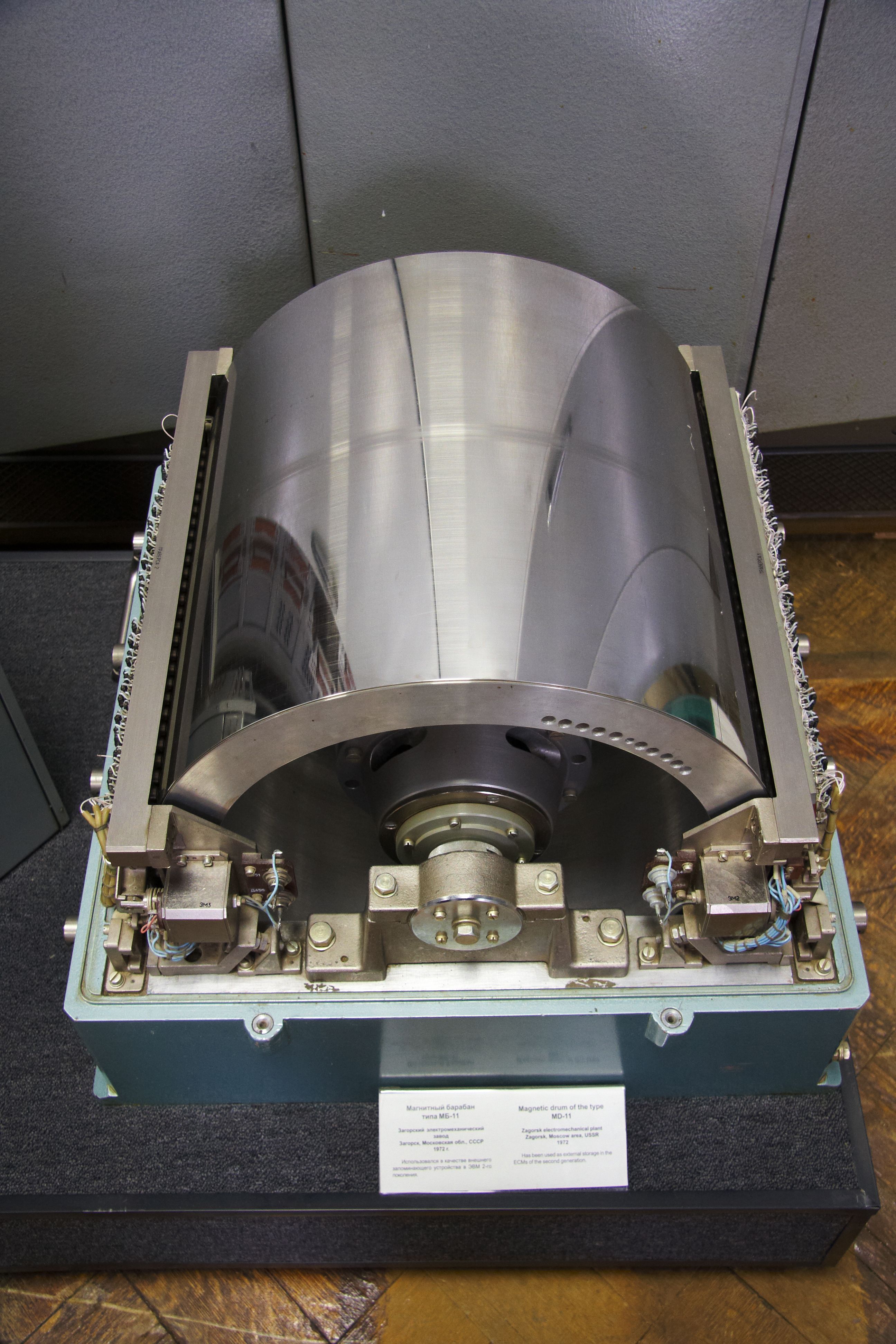

The magnetic drum, which I very much loved in my childhood to examine when I visited the Polytechnic Museum. Photo is clear where
Recording to such devices was very simple. A magnetic field was applied to a certain place, the strength of which encoded one or zero. The reading of information took place using the so-called magnetic head, in which, when it passed at a certain speed past the area with the recorded data, an induced current appeared due to a change in the magnetic field, the strength of which depended on the strength of the magnetic field. Tape drives worked in a similar way. Interestingly, modern hard drives use a different principle of storing and reading information. Which is an occasion for a separate article.
In the previous chapters, about warm tube memory, I mentioned that she did not live long. But who replaced her? And the answer is again magnetic memory, this time in the form of memory on ferrite rings. Ferrites have a very useful property, magnetization hysteresis , i.e. they could be in two fixed states, which is what we need.

The block diagram of addressable memory on ferrite rings is from here
To write ring F to conductors and a current is supplied that forms an H / 2 field around each of the conductors, provided that only H is sufficient to change the magnetization of the ferromagnetic ring, and the magnetization of the rings C , D, and E caught in the path after turning off the current returns to its original values due to the hysteresis magnetization. Now we need to read the data. To do this, the write current “0” is applied to the target ring. If a unit was recorded, then the magnetic field in this ring will change its direction, a current pulse will be induced in conductor S , and if there was “0” then there will be no current. So we found out what was recorded. Of course, as in the Williams tube, you have to return the unit to its place. For years to come, this type of memory will reign supreme in computers. According to one version, it is to him that we owe the term “flash memory”, because of the production method, manual stitching of rings with wires, something like this:
RAM fee 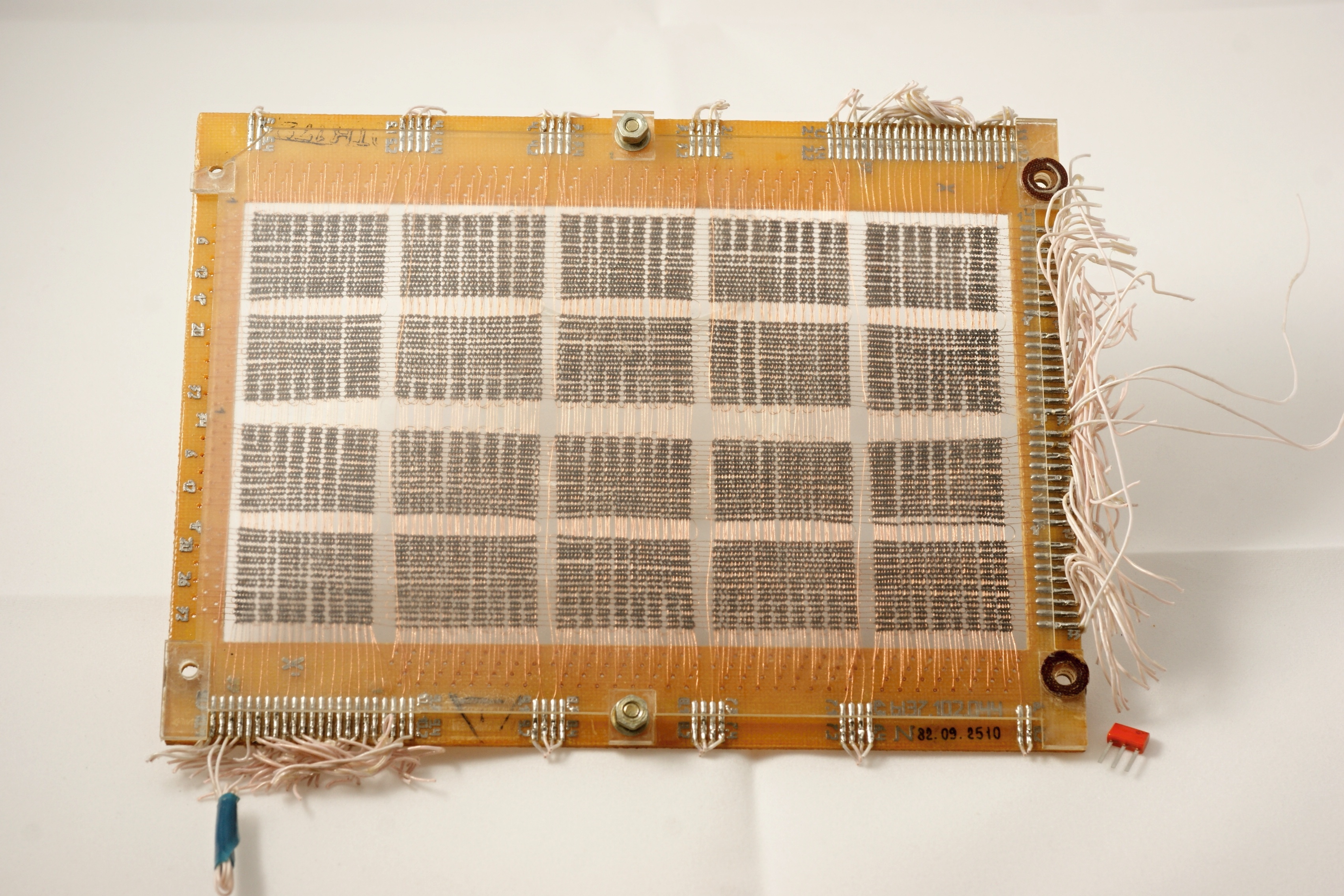

The RAM board, for 11560 bits, divided into 20 matrices of 34x17 format. It was used in an alphanumeric terminal with vector character mapping RIN-609; manufacturer - presumably, one of the enterprises of Armenia. From there.
Conclusion
There is much in the world, Horatio's friend ... oh wrong. There are many more strange ways to store data. I hope in the comments they will throw something else interesting. For my part, I’ll say that I highly recommend that people involved in the development of digital and simple technology look at early ideas in various branches of technical thought, when, as they say, the need for invention is tricky, it teaches thinking outside the box and just broadens one’s horizons. Thanks for your attention.
All Articles